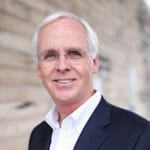Although physician shortages were a key industry issue before COVID-19, the situation has been exacerbated further by the pandemic and now is forecasted to be on the rise more at long-term care facilities as we exit the pandemic.
According to data published by the Association of American Medical Colleges, the United States could see an estimated shortage of between 54,100 and 139,000 physicians, including shortfalls in both primary and specialty care, by 2033. To help address this shortage, many long-term care organizations are turning to alternative care delivery solutions as one key option to address the gap.
As any owner or operator in a senior living and care community can attest, healthcare is changing dramatically. The industry continues to shift away from considering virtual care only as an alternative means of care. Today, virtual care widely is becoming viewed as a means to providing real patient care — with physicians providing predictable, responsive and reliable services.
Although telehealth is increasing access to care for vulnerable populations, technology alone does not solve for gaps in access to care. An integrated model that offers healthcare access via a robust virtual solution in tandem with traditional in-person diagnosis and treatment will provide the most comprehensive care solutions.
According to the Harvard Business Review, physician shortages most often are attributed to an inefficient system that includes different care models, labor practices, sites of care and workflow challenges. Uneven distribution of providers, incomplete coverage during nights and weekends, inflexible care models, payer aversion, and inefficient use of provider time from electronic documentation also affect available clinical coverage.
Ganesh Pawar, M.D., a hospitalist for Aspirus Medford Hospital, a rural critical access hospital located in Medford, WI, that also supports a skilled nursing facility, needed a solution to address gaps in clinical coverage during nights and weekends. Dr. Pawar was one of two providers delivering care at the hospital during the day and also receiving calls from the nursing home at night. “In rural areas, it’s often a one-man show. It’s tiresome because you don’t get any rest,” he said.
Although Dr. Pawar originally was hesitant about virtual care, he was pleased after implementing telehealth into the clinical workflow to address gaps in clinical coverage and treat more patients/residents in place, avoiding unnecessary transfers and reduction in length of stay. “Virtual care has made a big impact on our coverage and physician quality of life. We now have the support we need to provide care locally,” he said.
Dr. Pawar added that having access to responsive clinical care support promotes helps reduce burnout rates and makes it easier to attract quality talent to rural areas.
According to a study published in JAMA, nurses experienced increased demands during COVID that were associated with greater burnout and decreased satisfaction. Nurses make up a key element of the patient care team, so addressing causes of burnout is critical to preventing gaps in access to care.
For Todd Lacy, chief financial officer of Masonic Homes Kentucky, integration of virtual care provided nurses with the support they needed. “Virtual care is a tool that makes nurses more efficient and confident. They now have access to real-time expertise and don’t have to wait 24 hours for a physician to respond,” he said.
Masonic Homes implemented virtual care five years ago as a way to support high-need patient/resident admissions coming from the community hospital. Community hospitals, Lacy said, are facing increased pressure to get patients out quickly, which has resulted in a new hybrid model of care that includes virtual care delivery.
“The [need] level of patients coming from the hospital has increased tenfold over the last 10 years,” he said. “Long-term care providers have to make a decision whether to treat subacute or treat all aging-in-place residents. With virtual care, you get the coverage you need to treat both subacute and aging-in-place residents.”
At facilities such as Masonic Homes, virtual care has integrated seamlessly with existing provider, nurse and staffing resources to help bridge the gap and guarantee better clinical and financial outcomes.
“We signed up for virtual care because it’s the best thing and right thing to do for our residents,” Lacy said. “We’ve reduced our patient length of stay with better health outcomes and employee retention. We’re also making more money with virtual care.”
Physician recruiting and staffing is continuing to become more challenging for assisting living, skilled nursing and other long-term care facilities of all sizes. In the face of mounting physician shortages, nurse and provider burn-out and changing patient expectations, alternative forms of healthcare delivery, such as telehealth, are becoming more important for addressing critical gaps in access to care.
Bob Crutchfield is CEO of TeleHealth Solution. In this role, Crutchfield he leads the overall operations and management of the company’s resources as it grows rapidly to meet the demand for telehealth. Crutchfield is a seasoned executive with more than 30 years of leadership experience in healthcare services, IT and medical devices. Crutchfield also is executive chairman of Hotspot Ventures and previously served as executive chairman of TeleHealth Solution.
The opinions expressed in each McKnight’s Senior Living marketplace column are those of the author and are not necessarily those of McKnight’s Senior Living.




